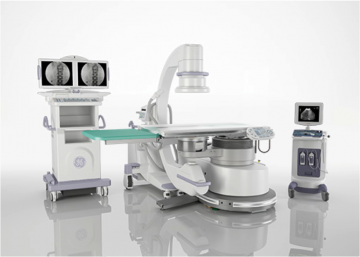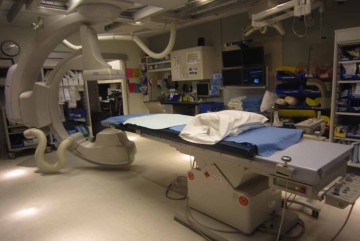Your urologist will discuss the treatment option that is best for you depending on your unique profile and needs.
Treatment of the stone may include one or more of the following options that are available at The Stone Centre:
24-hour urine and diet evaluation followed by a customized diet plan (for more info on diet and how it pertains to kidney stones click here)
Extracorporeal Shock Wave Lithotripsy (ESWL):
The least invasive of the three procedures. ESWL uses shockwaves to target the kidney and break up small to medium sized stones (usually ranging from 4mm to 2cm) so that the smaller stone fragments can be passed by the patient.
There are some complications associated with ESWL. For example, it is possible that after the stones fragment they may clog the ureter and obstruct urine flow.
ESWL does not require a patient to stay overnight at the hospital.
The shockwaves used to break up the stones during ESWL can be either “wide” or “narrow” in focus. Currently there is no consensus which focus is better or more effective at breaking up stones. The Stone Centre along with several other clinical sites is trying to answer this question through the “SWL Dual Foci Study”. For more info on this study please visit our clinical trials page.
[Click HERE to see an animation on how ESWL works]

Ureteroscopy (URS) + Laser Lithotripsy:
Procedure in which a small, flexible scope is inserted in the urethra and then goes through the bladder up to the ureter. This allows the doctor to see into the ureter and diagnose and identify any potential stones. Once the stones are identified, a tiny wire basket is also inserted up to the ureter and is used to basket/remove the stones.
Alternatively, a laser fibre can be inserted up to the ureter to break up the stones into essentially “dust” which will go on to be passed spontaneously. There is currently no consensus on whether the “basketing” or the “dusting” technique is more effective.
To determine which technique is more effective the Stone Centre is involved in a research study called “dusting vs. basketing”. For more info on this study please refer to our clinical trials page.
[Click HERE to see an animation on how URS works]
Percutaneous Nephrolithotomy (PCNL):
The most invasive of the three procedures. PCNL is typically used for stones that are larger than 2cm and for stones that have not fragmented through ESWL.
The procedures involves creating a small hole in the kidney through the back of an anesthetized patient. Once the hole is created different tools can be inserted into the kidney to break up the stones and suck up the pieces. Typically, this is the most effective surgery at completely ridding a patient of their stone burden (although some patients will require a follow up procedure).
Some of the risks associated with PCNL include infection and bleeding (since there is a hole being made in the kidney).
The Stone Centre runs several different studies with respect to PCNL. Some studies look to evaluate the efficacy of different tools that are used to break up and suck up stones. Other studies look to evaluate the efficacy of a pre-op antibiotic regime in preventing infection. For more information on these studies please visit our clinical trials page.
[Click HERE to see an animation on how PCNL works]

For more information you can check the “about us” section or contact us.
